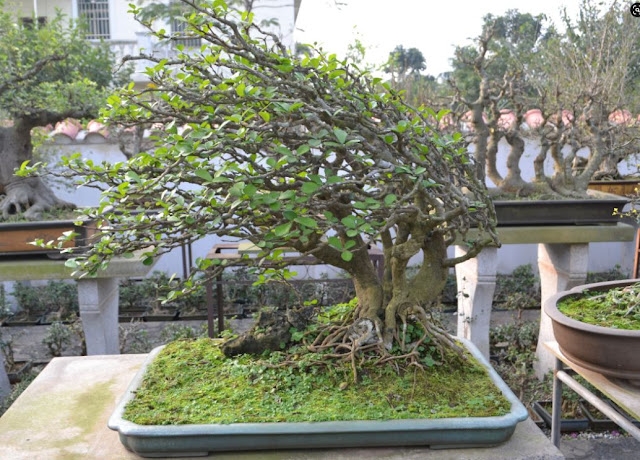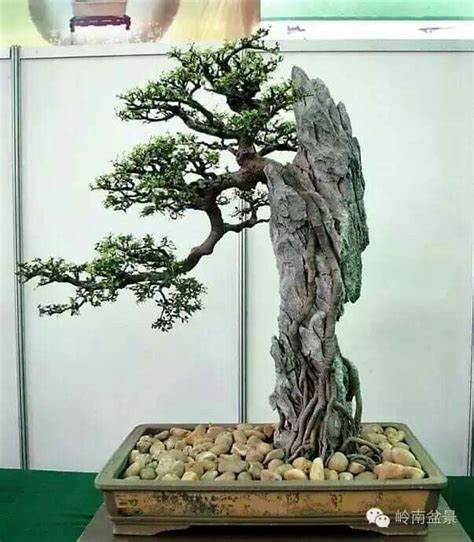
Hainan, the tropical jewel of China, is not only celebrated for its stunning beaches, lush rainforests, and vibrant culture but also for its deeply rooted tradition of penjing. As a captivating form of Chinese art, penjing is akin to bonsai in its endeavor to capture the essence of nature within miniature landscapes. This story explores the rich history, cultural significance, and passionate practitioners of penjing in Hainan, delving into the mystical world where harmony, beauty, and nature coexist in diminutive form.
The Birth of Hainan Penjing
The roots of penjing in Hainan can be traced back to ancient China, where early practitioners sought to recreate nature's beauty within a confined space. We'll uncover the historical origins of penjing and how this art form evolved over time to reflect Hainan's unique natural environment.
Hainan's Natural Bounty
Hainan's diverse flora and climate have provided the ideal backdrop for the growth of penjing. This section explores the unique plant species that thrive on the island and the impact they've had on the development of Hainan penjing. It was estimated that approximately 60% of the island is covered by forests. The gardens on Hainan Island can be stunning and diverse. The island's tropical climate allows for lush and vibrant vegetation to flourish, creating beautiful landscapes and gardens.
There are numerous botanical gardens, parks, and cultivated areas showcasing a wide variety of tropical plants, flowers, and trees. Visitors often find the gardens in Hainan to be quite beautiful, offering colorful displays and serene settings to explore and enjoy.
Sanya: Known for its stunning beaches, Sanya also hosts some beautiful gardens like the Luhuitou Park with its lush greenery and panoramic views.
Yalong Bay Tropical Paradise Forest Park: This park not only offers forested areas but also showcases tropical plants and flowers.
Nanshan Cultural Tourism Zone: It features the Nanshan Buddhist Cultural Park with meticulously landscaped gardens and beautiful statues.
Baoting Li and Miao Autonomous County: Here, the Yanoda Rainforest Cultural Tourism Zone presents visitors with various gardens amidst the rainforest setting.
These locations stand out for their diverse flora, well-maintained landscapes, and often stunning views. Each garden or park offers its unique charm, allowing visitors to immerse themselves in the beauty of Hainan's natural surroundings.
The Artistry of Hainan Penjing
Penjing is more than just gardening; it is an art form that requires deep knowledge of horticulture and an artist's eye for design. We will delve into the techniques and principles that transform a simple pot of plants into a breathtaking miniature landscape.
Styles and Variations
Hainan penjing, like other regional penjing traditions, boasts a variety of styles, each with its own distinctive characteristics. From the rustic and natural to the more refined and intricate, we will explore the diverse penjing styles that have evolved in Hainan.
Penjing Masters of Hainan
Hainan has produced some of China's most esteemed penjing masters. This section profiles these revered figures and their contributions to the art, as well as the stories and legends that have made them famous.
The Contemporary Guardians
In the modern era, a new generation of penjing artists has emerged in Hainan, carrying on the legacy of their predecessors. We will meet these contemporary artists and witness their dedication to preserving and evolving the art of penjing in Hainan.
The Cultural Significance of Hainan Penjing
Penjing has always held a special place in Chinese culture, symbolizing harmony, balance, and the deep connection between humans and nature. This section explores the cultural significance of penjing in Hainan and China at large.
Penjing in Daily Life
Hainan's residents have integrated penjing into their daily lives, from private gardens to public parks. We will delve into the role of penjing in the island's culture and how it influences the way people interact with nature.
Preserving the Legacy
While Hainan's penjing tradition is rich and thriving, it faces its own set of challenges, from environmental concerns to changing cultural landscapes. This section addresses the hurdles that must be overcome to ensure the art's continuation.
Conservation and Education
Preserving the legacy of Hainan penjing requires dedicated efforts in conservation and education. We'll explore initiatives aimed at safeguarding this living art form for future generations.
The Heart of Hainan Penjing
Hainan's penjing tradition encapsulates the island's essence, blending nature's bounty with artistic expression, and embodying a profound connection to the natural world. Through the stories of its practitioners and the history of its development, we discover the heart of Hainan penjing – a world where beauty thrives in miniature, and harmony is celebrated in every pot of plants.
Hainan's penjing tradition is a captivating journey that unveils the beauty and culture of this tropical paradise. While this story offers a glimpse into the world of penjing in Hainan, it's important to remember that the real depth of this art form can only be fully appreciated by immersing oneself in its world, exploring the gardens, and engaging with the passionate artists who bring these miniature landscapes to life.
Interesting Books on Bonsai can be found here:
The Complete Book of Bonsai --> I've been into bonsai for 25 years and this is the basic Bible for beginner and intermediate bonsai enthusiasts. It has an excellent section on techniques, including pruning, wiring and whatnot, and it has a large species-specific tree guide. If you're into bonsai and want only one book, this is it.
Indoor Bonsai The Great Selection --> Creating beautiful, healthy bonsai is a wonderful skill that anyone can learn, with a little time, patience, and this all-inclusive manual. With color photos and drawings to illustrate the points, it introduces all the cultivation techniques; offers expert advice on location, soil types, watering, and pest control; and provides intricate instruction on training the bonsai--including pruning, wiring, and stretching it.
The Secret Techniques of Bonsai --> In The Secret Techniques of Bonsai, the author of the groundbreaking Bonsai With American Trees teams up with his son to offer not only the basics for creating perfect bonsai but also secret techniques they’ve developed over years of careful work and observation.
Bonsai Survival Manual --> Problem solving when your Bonsai get sick. Expand your gardening repertoire as you create a captivating and exquisite miniature world. In this introductory guide, Colin Lewis covers everything you need to know to design, grow, and successfully maintain attractive bonsai.
Bonsai and the art of Penjing --> Bonsai & Penjing, Ambassadors of Beauty and Peace describe how Chinese penjing and North American bonsai were later added to the Museum, making its collection the most comprehensive in the world. Stories of individual trees and forest plantings are featured, as are the roles played by the skilled and talented creators of these living art forms people such as John Naka, Saburo Kato, Yuji Yoshimura, Harry Hirao, and Dr. Yee-Sun Wu.
Bonsai with Japanese Maples --> With their delicate foliage, seasonal color changes, and intricate pattern of branching, Japanese maples are among the most popular and suitable plants for bonsai design. In this long-awaited book, internationally renowned expert Peter Adams discusses both the specific horticultural needs of Japanese maples as bonsai subjects and illustrates proven techniques for creating and maintaining beautiful specimens.
The Modern Bonsai Practice --> The most current, useful information on growing Bonsai. Fresh, practical, definitive, comprehensive reference guide to the finest art of horticulture: growing miniature trees. Common sense bonsai answers separating myth from fact with depth and detail. Appropriate for both bonsai hobbyists and experienced practitioners.
More Bonsai articles can be found here:
Please click here for more information on --> Chinese Penjing Bonsai
Please click here for more information on --> The Origins of Bonsai
Please click here for more information on --> The Art of Saikei Bonsai
Please click here for more information on --> Japanese Tanuki Bonsai
Please click here for more information on --> How to Water a Bonsai
Please click here for more information on --> Bonsai Healing Methods
Please click here for more information on --> Bonsai Books Review






No comments:
Post a Comment